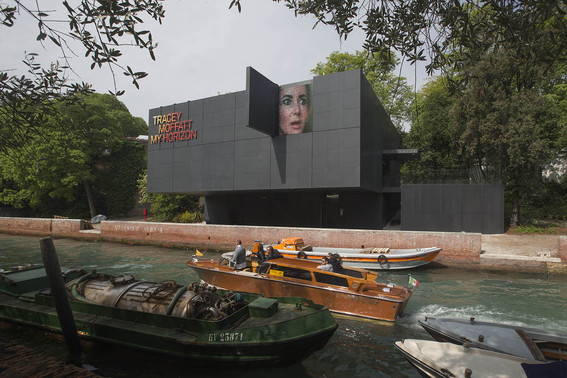
R
E
V N
E
X
T
Simon Mordant (left) and Hamish Balnaves (right) have withdrawn their support from the Australia Council for the Arts, citing a lack of consultation in the decision-making process of selecting artists to represent Australia in the next Venice Biennale. Photo of Simon Mordant courtesy the Australia Council for the Arts; photo of Hamish Balnaves from balnavesfoundation.com.
Two of Australia’s leading philanthropists have yanked their support—along with sponsorships worth millions of dollars—from the Australia Council for the Arts (ACA), the Australian government’s arts funding body. They have cited a lack of consultation in how the ACA selects artists to represent the nation at the Venice Biennale as the reason behind their exodus.
One of the figures is Australian financier Simon Mordant, who has twice served as an independent commissioner for the ACA, and was responsible not only for artist selection, but also the initiative to raise funds for a new Australian Pavilion, which opened in 2015 in the Giardini. The other is Hamish Balnaves of the private philanthropic organization, the Balnaves Foundation. Both donors feel that they were sidelined earlier this month when the ACA announced that the artist selection process would change, as they were not offered the opportunity to provide input on the matter, despite their active roles in supporting Australia’s cultural activities abroad. “There was no consultation at all,” Mordant told ArtAsiaPacific. “I was phoned by a friend who said they had just heard someone from the Australia Council bragging at an event about how they were taking control of the selection process.”
For years, whenever preparations for the Australian Pavilion’s presentation at the Venice Biennale were underway, the ACA would appoint an independent commissioner—such as Mordant, John Kaldor of the Kaldor Public Art Projects, arts benefactor Naomi Milgrom, and former Queensland Art Gallery director Doug Hall—who would bring together a small group of stakeholders, including curators and museum directors, to generate a shortlist of artists to participate in the selection process before making final picks. Previous panel members have included Elizabeth Ann Macgregor of Sydney’s Museum of Contemporary Art, as well as international curator Yuko Hasegawa. However, with the ACA’s latest pronouncement, this procedure and the position of independent commissioner have been abolished—all managerial procedures will be performed in-house by the ACA and a selection panel chaired by Australian artist Callum Morton will be responsible for artist selection. Simultaneously, a council comprised of “leaders from the contemporary visual arts community” will spearhead advocacy and fundraising efforts.
Under the new structure outlined by the ACA, the artist selection process will begin with an open call. “Any individual [Australian] artist can apply, provided they list a curator on their application,” a spokeswoman for the ACA told AAP. The deadline for proposals is midnight on November 22, and a shortlist will be made public in December, with the chosen artist or artists announced in February 2018.
In a press release published by the ACA on October 28, the organization’s chairman Rupert Myer cited organizational changes shared by the Venice Biennale’s governing body as the motivation behind these new developments: “La Biennale requirements for national participation now include that the commissioner ‘will have to belong to the governmental authority’ and that they are the project manager.” Mordant is highly critical of this development, and believes that the statement from Venice was actually a guideline or encouragement, rather than a hard-and-fast obligation.
Mordant is adamant that the board does not possess the contemporary visual art expertise to ensure the right choices are made. Referring to the previous mode of operation, he said, “The external independent commissioner worked very well with the commissioner, bringing to the role advocacy, networking and fundraising in addition to the actual selection process. The artists are always high-profile artists who are dropped into a high-pressure role, and the idea that artists of this caliber will respond to an advertisement on the Australia Council’s website for selection is nonsense.”
One Australian cultural figure who has served at the ACA, and who preferred not to be identified, told AAP that though the council’s new selection procedure appears to be more democratic, it had been attempted before, with poor results. “We did something similar a while back, and it proved unworkable and a complete mess. [This new procedure] seems like the old process rebadged as a new process,” they said.
Whatever the outcome may be from this spat in the Australian visual arts community, there are some who see the new rules as a way to work their way up the ladder. However, for Mordant and Balnaves, after having ploughed millions of dollars into supporting the contemporary visual arts scene of Australia, it appears that major philanthropists will be putting their money elsewhere if the ACA cuts them out of the decision-making process.
Michael Young is a contributing editor of ArtAsiaPacific.
To read more of ArtAsiaPacific’s articles, visit our Digital Library.




